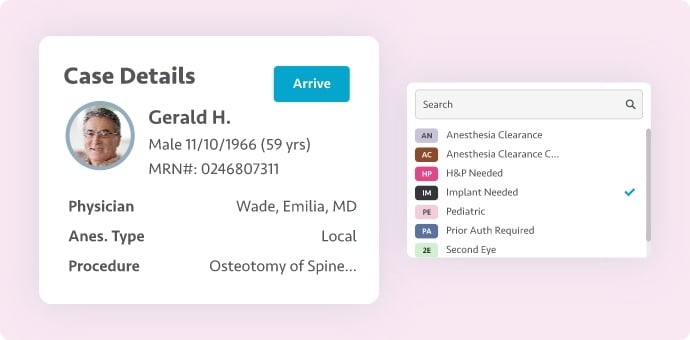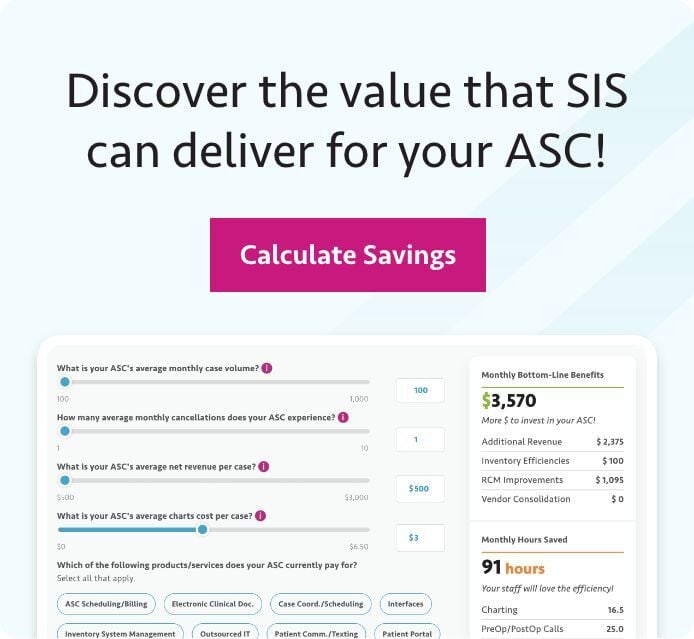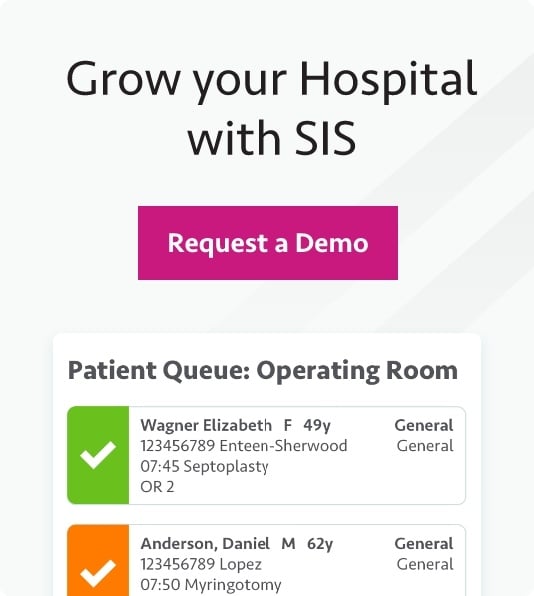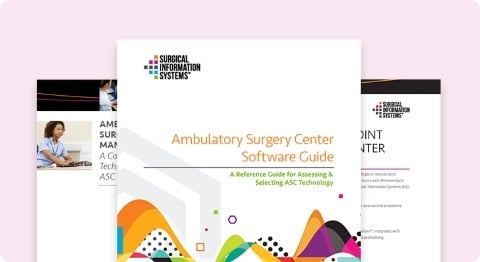Originally published on Becker's ASC Review.
August marks National ASC Month, a time to educate policymakers about the vital role ambulatory surgery centers (ASCs) play in the U.S. healthcare system. It’s an opportunity to highlight what sets ASCs apart from other care settings, from their high-quality services to the comfort and convenience they provide patients.
As we celebrate how far ASCs have come, 2025 signals a potential leap forward. Last month, CMS released the 2026 proposed payment rule for ASCs and hospital outpatient departments (HOPDs). This proposal is a strong indicator of the growing importance of ASCs in the healthcare market and reflects the hard work of ASC physicians, leaders, clinical teams, and staff.
Key changes under consideration include significant updates to the ASC Covered Procedures List (ASC-CPL) and the phase-out of the inpatient-only (IPO) list. These changes could allow ASCs to expand their capabilities, offering procedures that were traditionally performed in inpatient hospital settings.
For ASC decision-makers, these possible changes, on top of significant developments introduced by final rules in recent years, present both exciting opportunities for growth and new operational complexities. Accounting for increased patient volumes, expanded procedure offerings, and greater case complexity will require ASCs to maintain quality care and enhance financial performance proactively. Acting now by implementing the right systems, workflows, and strategic partnerships is essential.
In this column, we explore the projected impact of the 2026 proposed rule and provide actionable strategies for ASC leaders to leverage scalable technology and advanced revenue cycle management tools to drive sustainable growth and operational success.
ASC-CPL Expansion Would Open New Revenue Streams
The proposed expansion of the ASC-CPL represents one of the most substantial updates in years, particularly with CMS considering adding 276 procedures1 and focusing on high-demand cardiology and spine procedures. The size and scope of this proposal reflect ongoing efforts by the Ambulatory Surgery Center Association and other organizations to encourage and convince CMS to prioritize outpatient care further.
CMS has steadily grown the ASC-CPL in recent years, most notably adding several total joint replacement and cardiology procedures. These expansions create new opportunities for ASCs to perform a broader range of surgical cases for a growing number of patients.
For ASCs, expansion of the ASC-CPL means more than just growth. It opens the door to new revenue streams. Adding complex procedures in a wide range of specialties and backed by appropriate Medicare reimbursement rates increases patient volumes for both Medicare and commercial payers, as commercial insurers often follow Medicare’s lead in covering procedures.
ASC leadership teams aiming to diversify service lines, grow case volume, and strengthen their referral networks can leverage these new covered procedures to position their ASC as a more comprehensive surgical provider, meeting the growing demand for outpatient care across many specialties.
Phase-Out of the IPO List Would Further Unlock Growth Potential
If CMS’s proposal to phase out the IPO list over a three year period2 comes to fruition, it will further accelerate the shift of appropriate procedures to outpatient settings, including ASCs. This would expand access to high-quality, cost-effective surgical care while supporting value-based care goals.
ASCs are playing a big role in introducing greater efficiency into the healthcare system and offering significant cost savings in the process. Studies show procedures performed in ASCs can cost 60% less than in HOPDs3. Recent analyses estimate that Medicare saves more than $4 billion annually4 when surgical procedures are performed at ASCs rather than HOPDs, while also reducing out-of-pocket expenses for patients and lowering costs for payers.
For ASC operations leaders, the elimination of the IPO list would likely open the door for ASCs to perform more complex procedures. This presents both opportunities for growth and the need to prepare for higher-acuity cases. Investments in clinical resources, advanced equipment and software, and staff training and education will be critical to positioning a surgery center for success in this rapidly evolving landscape.
Billing Accuracy Becomes Mission-Critical
As ASCs undergo specialty and procedure changes, including the addition of increasingly complex cases, accurate documentation, coding, and billing become increasingly critical to maintaining financial health. Many new and complex procedures involve billable devices and supplies, which require complete and compliant records to ensure proper reimbursement. A single overlooked billing error, especially on higher-cost and higher-reimbursing cases, can lead to significant revenue loss, and as case volumes grow, so does this risk.
To meet these requirements, ASCs must prioritize:
- Pre-authorization management for devices and complex procedures
- Comprehensive charge capture to minimize missed revenue
- Clinical documentation workflows aligned with coding and compliance standards
- Proactive denial management protocols for quicker identification and resolution
Partnering with experienced, ASC-focused revenue cycle management (RCM) providers and investing in advanced surgery center billing technology can help reduce costly mistakes and delays, protect margins, and optimize returns as ASCs undergo changes to and expansion of service lines.
Scalable Systems for Long-Term Growth
As ASCs perform more complex and higher volumes of procedures, centers must evaluate their systems for scalability. Manual and disconnected processes can quickly become obstacles to growth.
The majority of new Ambulatory Surgery Centers (ASCs) now launch with an electronic health record (EHR) system already in place and estimates indicate that 20-50% of existing standalone ASCs have transitioned to using EHRs5. When combined with ASC Management, patient engagement, billing, and analytics technologies, patterns show that ASCs substantially lower their operation costs, increase patient throughput, increase margins, and increase their procedure volume.
By implementing modern, scalable systems, ASCs can adapt to growing demands while supporting sustainable growth. Operational excellence in an ASC now largely depends on:
- Integrated technology platforms that connect all critical processes, from scheduling and documentation to billing and analytics
- Automated workflows that reduce administrative load as case count rises
- Rapid onboarding and training capabilities to empower ASC staff to adapt quickly as new specialties, procedures, and surgeons are added
- Real-time dashboards and reporting for actionable insights into clinical and business performance
Integrated ASC solutions, like those from Surgical Information Systems (SIS), provide the infrastructure to unify operations, minimize risk, and position a surgery center for ongoing, efficient growth.
Strengthen Payer Negotiation Position
The continued CMS commitment to aligning ASC payments with hospital outpatient rates underscores the critical role ASCs play in today’s healthcare ecosystem. For payer contract negotiation teams, this alignment essentially serves as government-backed validation of the value ASCs provide and deliver.
With the expanding ASC procedure list, administrators can emphasize their center’s efficiency, cost savings, and new service offerings when negotiating with commercial payers. This positions ASCs to secure more favorable agreements and enhance payer relationships, due to their ability to deliver exceptional clinical care to beneficiaries while generating cost savings for insurers.
To maximize the projected opportunity presented by CMS’s proposed 2026 changes, ASCs should reassess their commercial payer strategies. A further expanded ASC-CPL would allow for the addition of more high-value procedures, but securing appropriate reimbursement for these procedures is key. Proactive contract renegotiations will help ASCs ensure they align their reimbursement with costs for any newly approved procedures, better ensuring financial sustainability.
By leveraging data-driven insights, such as procedure volume forecasts, revenue modeling, and cost benchmarking, accessible through ASC analytics, surgery centers can better support their argument for fair coverage and/or improved reimbursement in payer negotiations. This approach can help prevent underpayment and improve collections while positioning ASCs for long-term success.
Quality Reporting Requirements Evolve
The 2026 proposed rule also includes some noteworthy changes to the ASC Quality Reporting (ASCQR) program.
While this update would ease some reporting burdens, staying proactive about quality tracking, compliance, and continuous improvement remains essential. Robust quality measurement tools make it easier to comply with quality reporting requirements while empowering an ASC to demonstrate ongoing value to surgeons, regulators, payers, and patients.
Competition Intensifies Across the Market
As policy changes continue to favor the Ambulatory Surgery Center (ASC) model, hospitals, health systems, and investors—such as management firms and private equity groups—are expanding their presence in this space through acquisitions and joint ventures. In 2024, over 80% of hospitals and health systems reported owning at least one ASC6, nearly doubling the ownership rate from five years ago. Furthermore, approximately 75% of these ownership models are structured as joint ventures7. This shift highlights the rising strategic importance of ASCs within broader healthcare networks. For independent ASCs, physician practices aligned with one or more surgery centers, and regional or national ASC companies, maintaining a competitive edge means focusing on areas like:
- Differentiated service lines or patient experiences
- Consistent delivery of quality outcomes and cost savings
- Data-driven financial management and optimization
- Investments in technology to streamline operations and reporting while enhancing efficiency and bottom-line performance
Adaptability, a focus on operational excellence, and leveraging technological advantages will help ASCs navigate this more dynamic and competitive landscape.
Preparing for Transformation
A strong case could be made that the 2026 CMS proposed rule marks an inflection point for the ASC industry. It is clear that the migration of care from inpatient to outpatient settings, particularly to ASCs, will continue. Surgery centers are poised to become the preferred site of surgery for an increasing number of surgeons, patients, and payers. To capitalize on this transformation and opportunity, forward-thinking ASC leaders should focus on areas including:
- Technology integration: Streamline and connect all aspects of your operations with unified platforms.
- Revenue cycle excellence: Invest in RCM systems and partnerships for accurate, compliant, and efficient billing.
- Operational scalability: Design processes and systems that can adapt to increased procedure volume and complexity.
Those ASCs that prioritize these core areas will be best positioned to thrive, achieve new growth, and deliver greater value for patients and payers.
Today’s investments in scalable systems, clinical quality, and process improvement are the foundation for tomorrow’s success.
Partnering for Success
As Ambulatory Surgery Centers (ASCs) prepare to navigate the opportunities and challenges of the 2026 CMS proposed rule, having the right partners will be critical to success. Surgical Information Systems (SIS) offers a comprehensive suite of purpose-built solutions designed to help ASCs thrive.
SIS Complete™ provides a fully integrated platform to streamline scheduling, documentation, and billing, ensuring seamless operations. SIS Revenue Cycle Services leverages ASC-specific expertise to enhance collections and minimize denials, optimizing financial performance. For centers focused on strengthening compliance strategies, SIS Comply™ delivers digital tools for accreditation readiness, physician credentialing, and staff training.
By combining these solutions, SIS empowers ASCs to Operate Smart™, enabling them to scale operations, safeguard and grow revenue, and confidently meet evolving regulatory requirements.



























